Our Verdict
A beautiful but short-lived expedition that left me wanting more of its best ideas.
PC Gamer's got your back
What is it? A first-person spelunker where you paint invisible walls with dots of light.
Expect to pay: $12/£9
Developer: Introversion Software
Publisher: Introversion Software
Reviewed on: Windows 10, 16GB RAM, GeForce GTX 980 Ti
Multiplayer: None
Link: Website
Buy it: Humble Store
Scanner Sombre's trickier moments could easily be solved if my character had just remembered to bring a flashlight. That's not to say I wanted one. Exploring a deep cavern with an LED lantern would be one kind of tense, but with no light at all, the echoing thuds of my footsteps and reverberations of distant falling rocks filled my imagination with uncertain visions of the dangers in the dark—I could eventually see every crack and crevice of the caves around me, but never really knew what they looked like in the light.
Scanner Sombre is the unexpected and rather sudden next game from Prison Architect developer Introversion Software. It's a short but sweet exploration game in which you make your way from deep within a pitch black cave up toward the surface. The environment is entirely invisible, and the only way to find your way around is by shooting specks of light onto the walls with a LIDAR scanner.
There's no cooldown or limit to using the scanner, and you can actually place an infinite number of LIDAR dots on the hidden geometry around you, all of which will stay exactly where they land, even when looking from above at the in-game map. Add in a rainbow color scheme to indicate depth and distance, and the whole effect makes Scanner Sombre one of the prettiest games I've played in a long time despite having nearly no textures I could see.

The LIDAR scanner is unlike any mechanic I've seen in a game before, and it's absolutely marvelous. Slowly filling out the corners of a room is both exciting and slightly unnerving, as I never know quite what each new clearing will look like. I enjoyed revealing what I thought would be an empty room, only to catch a few dots on a pillar or rock jutting into the middle of it. My new mission then became circling that object to map it entirely, which felt like carving a landscape out of air. And as I revealed more, I started to get bits and pieces of the history behind these caves—often coupled with some on screen text to explain what was in front of me, albeit in a somewhat hamfisted way.
Paint by caverns
Choosing what to douse in dots and what to only leave partially revealed was entirely up to me, making Scanner Sombre's map feel strangely personal. I could look back and remember why I focused on a certain area or see empty holes that obviously didn't interest me. Long 'shadows' cast on the ground where an object blocked my LIDAR scanner could even reveal exactly where I was standing when I set about blanketing a room.
It's a good thing sending out those LIDAR dots is so utterly captivating, because it's the bulk of what Scanner Sombre has to offer. Completing the game only took me about two and a half hours, which left me conflicted. On the one hand, the scanning mechanic never overstayed its welcome, and I enjoyed using it the whole way through—if this were a 10 hour game, I'd likely have been bored with the concept long before it was over. But on the other hand, interesting ideas and interactions were only briefly touched on and left me wanting more.

An idea I'm glad was explored thoroughly was water; LIDAR dots rest briefly on the surface of subterranean lakes and puddles before fading away, and the water also reflects hazy versions of the dots you've painted on the walls nearby. Wading through shallow pools messed with my vision and stopped me from scanning, leaving me helpless and deepening my unease. Segments like the large underground lake level were welcome—if tense—breaks between otherwise twisting tunnels and dome-roofed caves. Water meant I couldn't just paint an entire room rainbow by using the powerful burst scan upgrade, breaking up the static tunnels with sparser, shimmering new caves.
But other interesting ideas aren't given a similar level of attention. Scanner Sombre isn't a horror game, but it drifts toward that genre in its first half. Being alone in the dark naturally put me on edge, and when Scanner Sombre wanted to make my skin crawl it succeeded handily. But after I passed the aforementioned lake (which at one moment had me running through blackness in fear) those suspense elements disappeared like the walls around me. I wasn't looking for it to ramp up to jump scares, but Scanner Sombre's opening hour plays the discordant tones of a suspense game, and then never actually becomes one.
Echolocation
One of the reasons that tone is set so perfectly is Scanner Sombre's immaculate audio design. I can not praise the sound in this game enough. I could tell what type of surface I was walking on or how big a room was based just on the audio of my footsteps. Hard stone turns to crunchy gravel before I slosh through a puddle, and I knew the puddle was coming because I could hear the drips from a stalactite above it. Sound paints a picture so vivid I practically forgot all I was looking at was invisible geometry mapped by colored dots. Even thinking back now, I can see fully textured and lit up versions of Scanner Sombre's most memorable rooms in my head despite them not actually existing.
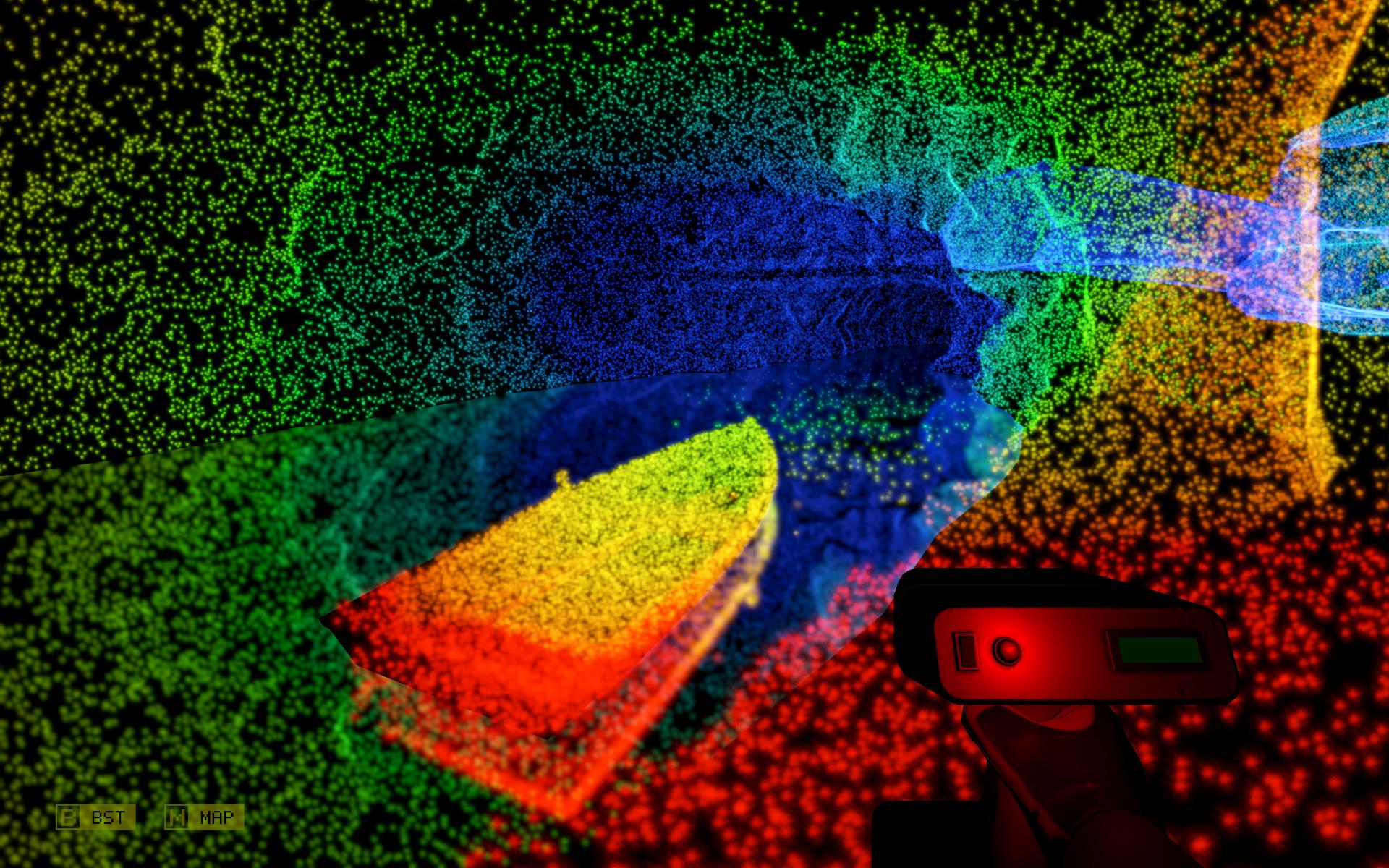
An enchanting sequence where I piloted a small rowboat soothed the tension after my terror at the lake. Its naturally light-specked ceilings and soothing music are beautiful, but never iterated on later. It's the only time you aren't walking in the whole game, and it only lasts a few minutes. Nothing overstays its welcome in Scanner Sombre, but equally, its best ideas disappointingly flit away never to be seen again.
A little puzzle-ish detective work arrives toward the end, as another example, but just the once. I found an elevator that needed to be powered up, with two cables running out from it in opposite directions. To find the buttons that would provide power, I had to scan and reveal the cables and then follow where they led. It wasn't difficult, but it was an nice way to let me engage with my surroundings and gave me a reason to scan beyond just painting the landscape. But this was the only part of the game that played with this idea, and it came a stone's throw away from the credits.
It's not scathing criticism to say "there were good sequences that I wanted more of," but it did leave me feeling like Scanner Sombre missed its full potential. I am glad Introversion showed the restraint not to milk the LIDAR effect throughout an overly-long romp filled with puzzles and cheap spooks—but it played with the idea so well in little variations that it left me wanting more. Even still, painting the darkness with dots is tense and captivating, pitting my curiosity against fear, rewarding me with beautiful scenes that half exist only in my head. By withholding information, Scanner Sombre let me fill in the gaps myself, making the experience feel larger than its short playtime would make it seem.
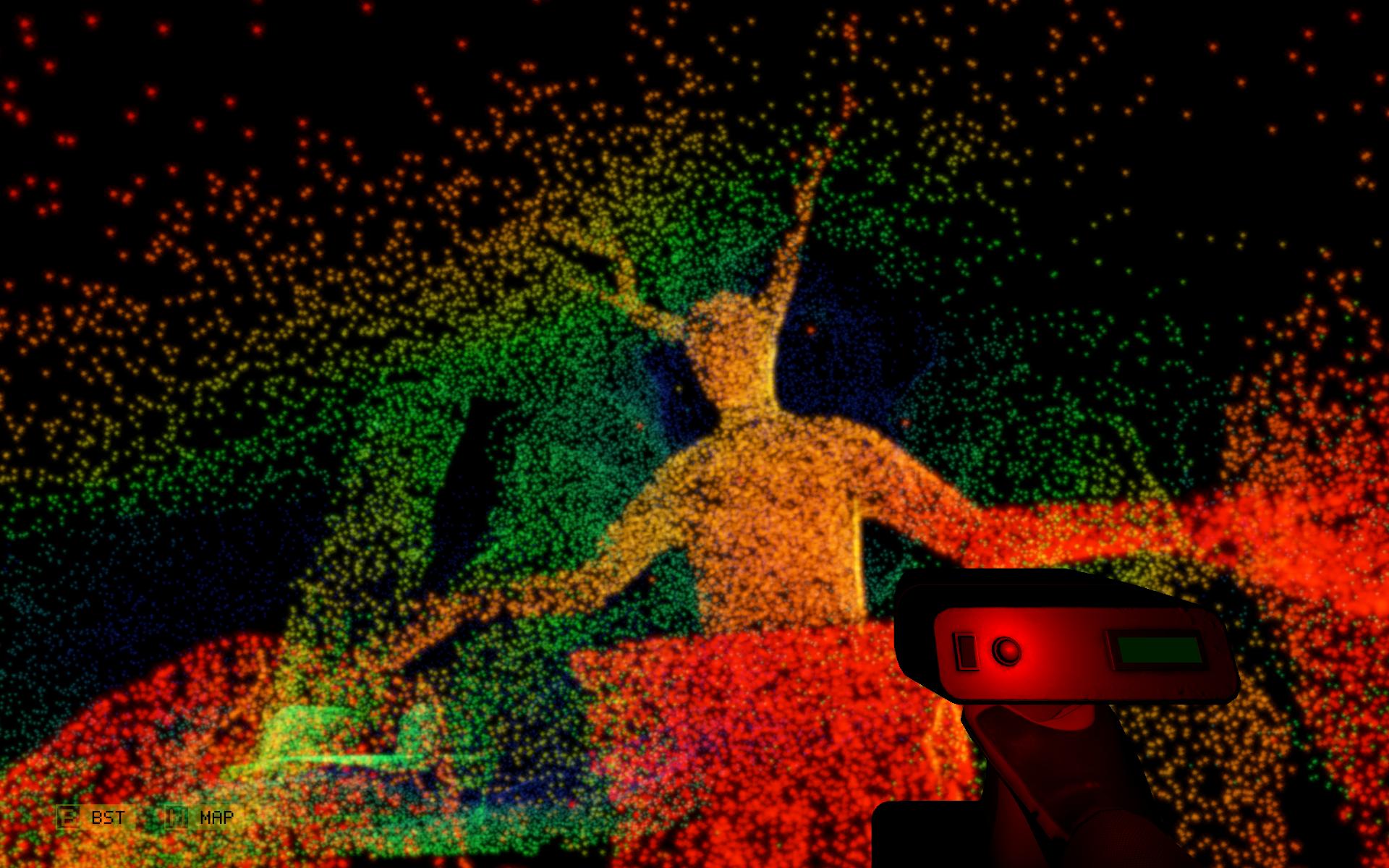
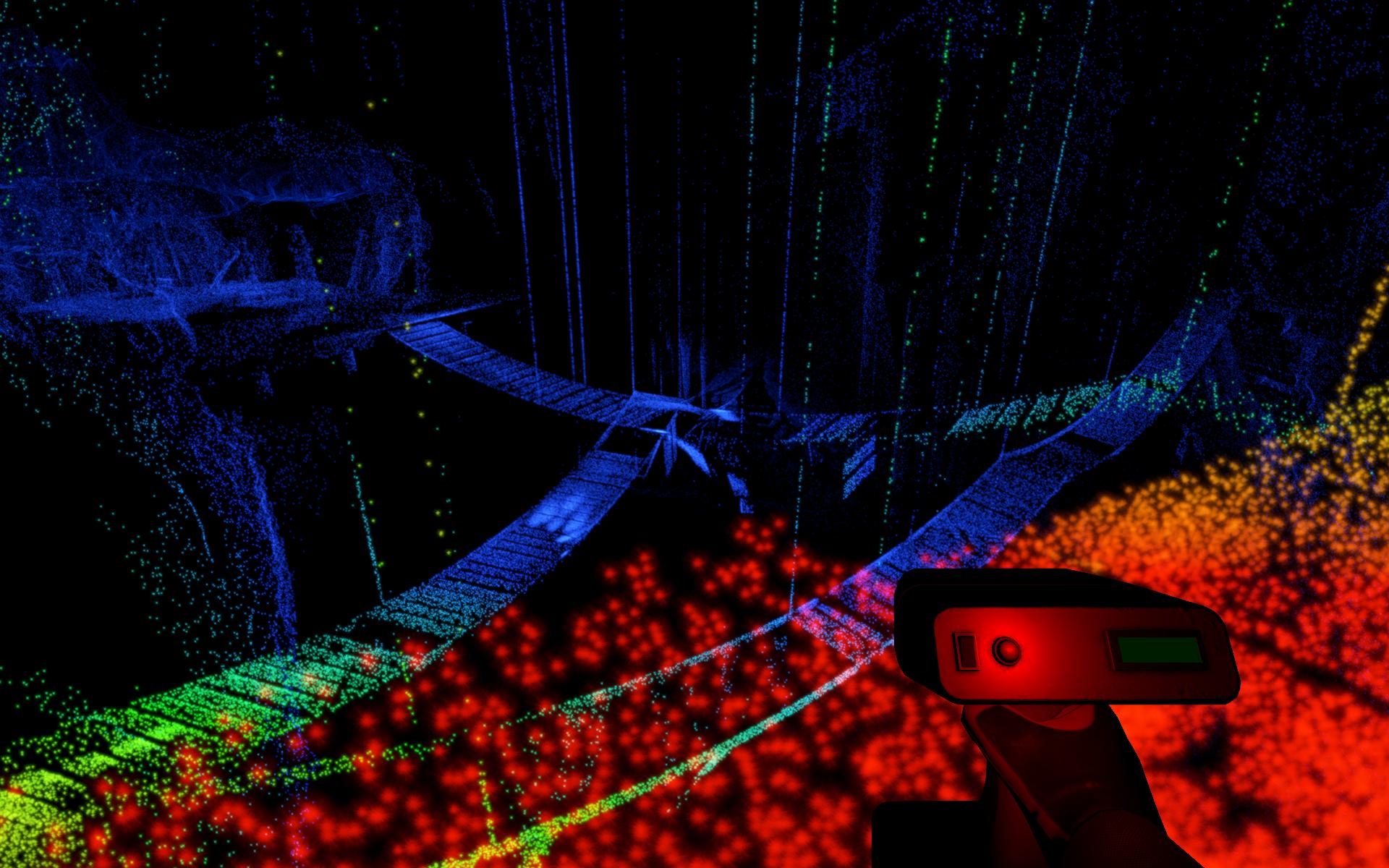


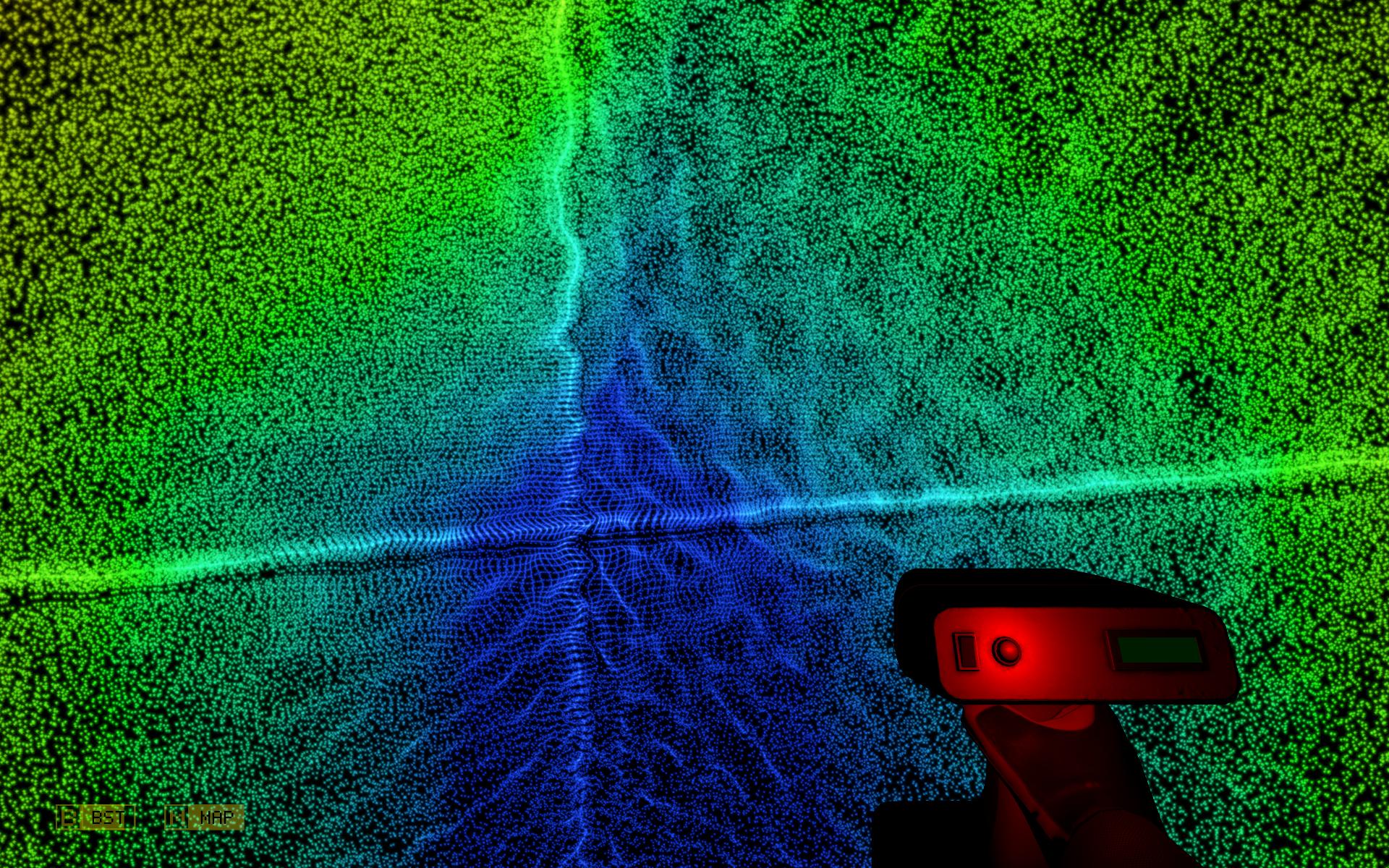

A beautiful but short-lived expedition that left me wanting more of its best ideas.

